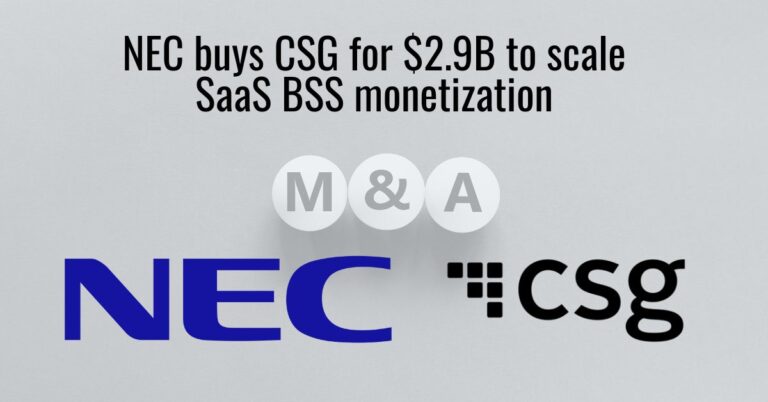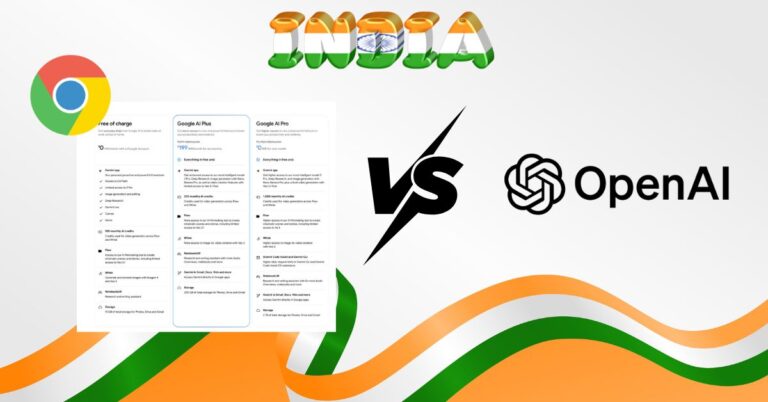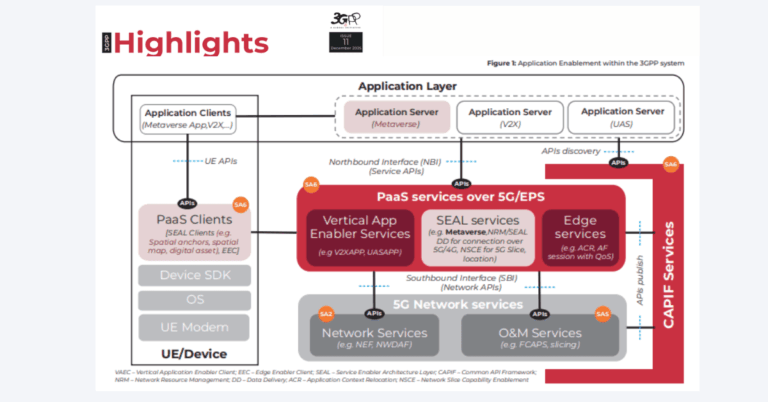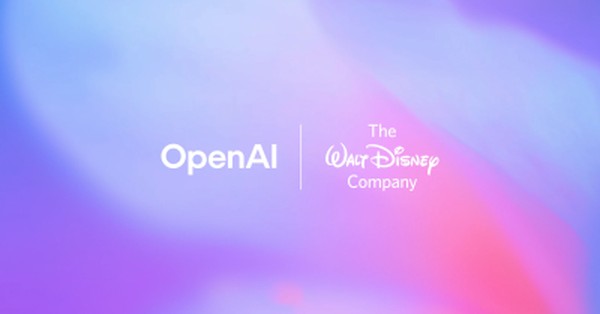NEC–CSG $2.9B deal overview and scope
NEC is moving to scale its cloud and SaaS business support capabilities with a $2.9 billion acquisition of CSG Systems International, positioning Netcracker at the center of the combined telecom monetization play.
What CSG adds: digital BSS, billing, charging, CX
CSG brings a sizable recurring-revenue portfolio in digital BSS, billing, charging, and customer engagement used by communications, cable, media, and digital service providers, complementing Netcracker’s OSS/BSS, orchestration, and service automation strengths.
Deal terms, valuation, and 2026 closing path
The all-cash deal values CSG at approximately $2.9 billion on an enterprise value basis and has unanimous board approval, with closing targeted for 2026 pending CSG shareholder approval and customary antitrust and other regulatory reviews in multiple jurisdictions.
Strategy: SaaS scale and Netcracker–CSG BSS synergies
The combination aims to expand NEC’s SaaS footprint, deepen Netcracker’s BSS stack, and accelerate AI– and cloud-native innovation for telecom and adjacent industries.
Unified BSS/OSS: catalog, charging, billing, care
Netcracker’s global OSS/BSS and automation franchises align with CSG’s revenue management, converged charging, catalog-driven monetization, and customer experience software, creating a broader, modular footprint across product catalog, order, charging, billing, partner settlement, and care.
Cloud-native SaaS delivery and global coverage
Both companies have been shifting core monetization workloads to cloud-native, microservices-based SaaS, and the combined scale should expand multi-tenant and single-tenant options, strengthen managed services capabilities, and widen coverage across North America, EMEA, LATAM, and APAC.
AI insertion points across CX and revenue assurance
NEC has been investing in applied AI and analytics, and CSG’s customer engagement and revenue assurance tools provide logical insertion points for AI-driven personalization, collections, and anomaly detection atop cloud-native pipelines.
Why now: 5G, Open Gateway, and faster monetization
The deal lands as operators re-platform for 5G standalone, partner-led growth, and Open Gateway monetization, where cloud delivery and fast iteration are essential.
5G SA, B2B2X, and partner settlement at scale
Converged charging, dynamic policy, partner management, and settlement are prerequisites for B2B2X offerings, network slicing, IoT, and exposure of network capabilities via APIs, and a unified NEC-Netcracker-CSG stack could streamline how service catalogs, charging, and partner settlements interlock for new revenue flows.
Cloud-native ODA-aligned components and Open APIs
CSPs are consolidating legacy billing estates into cloud-native components aligned to TM Forum Open Digital Architecture and Open APIs to reduce integration risk and time-to-market, and the combined vendor has an opportunity to supply pre-integrated, standards-aligned building blocks.
Cross-industry expansion: cable, media, public sector
CSG’s presence in cable/media and digital commerce aligns with NEC’s enterprise and public sector footprint, opening cross-sell into government, transportation, and utilities that need subscription, usage-based, and event-driven billing at the edge.
Execution risks and integration dependencies
Material value depends on disciplined integration, regulatory clearance, and clear product roadmaps that protect customer continuity.
Overlap management and product roadmap clarity
Both portfolios include digital BSS components that could overlap in catalog, charging, and care, so buyers will expect transparent product rationalization, coexistence timelines, and supported migration paths with tooling and commercial incentives.
Antitrust, security, and data residency controls
A cross-border acquisition will invite antitrust and national security reviews, and customers in Europe, the Middle East, and the public sector will scrutinize data residency, lawful intercept, and sovereign cloud options across SaaS deployments.
SLA assurances and critical talent retention
Operators will look for assurances on SLAs, price protections, support commitments, and retention of key engineering and delivery talent to avoid disruption in multi-year transformation programs.
Market impact and competitive landscape
The move ups the competitive ante in BSS monetization and managed SaaS, with ripple effects for incumbent and challenger vendors.
Competitive pressure on incumbents and specialists
Amdocs, Oracle Communications, Ericsson and Nokia’s charging suites, Hansen, MATRIXX, Optiva, and subscription-native players will face a scaled competitor with deeper SaaS breadth, and buyers could leverage this to rebalance vendor risk and pricing in upcoming RFPs.
Hyperscaler go-to-market and edge deployment
Netcracker and CSG both partner with major clouds, and a unified strategy around AWS, Azure, and Google Cloud—plus edge deployment patterns—could accelerate co-sell, marketplace distribution, and telco-to-enterprise monetization via network APIs.
Buyer actions: de-risk, negotiate, and pilot
Procurement and architecture teams should use the M&A window to de-risk roadmaps and secure commercial leverage.
Due diligence: product maps, APIs, tenancy, observability
Request a formal product mapping, end-of-life policies, and migration tooling; validate alignment to TM Forum Open APIs; and assess multi-tenant versus single-tenant SaaS options, data residency, and observability controls.
Contracts: price holds, support, AI governance
Negotiate price holds, support commitments for at least three to five years, exit clauses tied to roadmap slippage, and audit rights for AI usage and model governance across customer engagement and revenue assurance.
Near-term pilots: charging, partners, and catalog modernization
Prioritize pilots that couple converged charging with partner management for network API use cases, revisit vendor shortlists for 5G SA monetization and catalog modernization, and sequence migrations to retire costly legacy billing while preserving business continuity.








































